SAP S/4HANA vs SAP ECC: which ERP system is best for your business
SAP S/4HANA vs SAP ECC: how to choose the right path for your business transformation
In today’s competitive landscape, companies are under pressure to modernize operations, improve agility, and use real-time insights to make faster decisions. For many, this transformation starts with the core — the ERP system. If your organization runs on SAP ECC, it’s time to evaluate your migration path to SAP S/4HANA, SAP’s next-generation ERP designed for digital, data-driven enterprises.
But the question remains: should you migrate now, and if so, how? Understanding the differences between SAP S/4HANA and SAP ECC — and the available implementation models — is key to making a smart, future-proof investment.
What is SAP S/4HANA?
SAP S/4HANA is SAP’s flagship intelligent ERP platform built on the high-performance SAP HANA in-memory database. It offers real-time analytics, simplified processes, and an intuitive user experience powered by AI, automation, and embedded analytics. Designed for agility, it enables companies to move faster and respond to change with greater accuracy.
Why upgrade from SAP ECC?
SAP ECC (Enterprise Core Component) has been the backbone of enterprise operations for decades, but it was built for a pre-digital era. With SAP officially ending mainstream support for ECC by 2027 (extended to 2030 for select users), organizations face a critical decision: remain on legacy infrastructure or embrace the innovation and resilience of S/4HANA.
Businesses that migrate early gain advantages such as improved performance, scalability, and access to continuous innovation — including cloud-native technologies and AI-powered automation.
Comparison: SAP S/4HANA vs SAP ECC
The table below highlights the main differences to help you assess the value of migrating:
| SAP S/4HANA | SAP ECC | |
|---|---|---|
| Architecture | In-memory SAP HANA with simplified data model for real-time processing. | Disk-based databases with complex tables and slower data access. |
| User experience | Modern, role-based SAP Fiori interface across devices. | Traditional SAP GUI; requires more training. |
| Performance | Real-time analytics, faster transactions, and live reporting. | Batch processing with delayed insights. |
| Deployment options | On-premise, cloud, or hybrid models available. | Primarily on-premise with limited flexibility. |
| Integration & extensibility | Native APIs and extensions via SAP BTP. | Custom Z-code integrations that increase maintenance costs. |
| Automation & AI | Embedded machine learning, predictive analytics, and RPA. | Relies on external tools or manual processes. |
| Support horizon | Long-term roadmap and innovation beyond 2040. | Support ends by 2027 (or 2030 for select cases). |
| Best for | Organizations aiming for digital transformation and real-time intelligence. | Companies maintaining short-term stability with legacy systems. |
Choosing the right implementation approach
Once you decide to move to SAP S/4HANA, the next step is choosing the right implementation model. Each approach — Greenfield, Brownfield, On-premise, or Cloud — offers unique benefits depending on your business goals, existing infrastructure, and digital maturity.
| Greenfield | Brownfield | On-premise | Cloud | |
|---|---|---|---|---|
| Definition | New implementation from scratch with redesigned processes. | Conversion from ECC to S/4HANA while keeping existing setup. | Managed internally on company servers. | Hosted by SAP or cloud providers with subscription pricing. |
| Customization | High flexibility; designed for innovation. | Limited flexibility; legacy dependencies remain. | Fully customizable environment. | Standardized configuration; less maintenance. |
| Implementation speed | Longer due to process redesign. | Faster migration using existing data and settings. | Longer setup with hardware provisioning. | Quick deployment and automatic updates. |
| Cost model | Higher upfront, better ROI long-term. | Lower initial cost; preserves legacy investments. | CapEx-heavy, high maintenance. | OpEx-friendly, scalable pricing. |
| Best suited for | Enterprises pursuing full digital transformation. | Companies seeking minimal disruption migration. | Highly regulated industries requiring full control. | Agile businesses prioritizing speed and scalability. |
How to decide your best path forward
The right SAP strategy depends on your business priorities. If innovation, agility, and AI readiness are top of mind, S/4HANA Cloud or hybrid deployments offer faster scalability and continuous updates. If you value deep customization or regulatory control, an on-premise or private cloud model may fit better.
Likewise, Greenfield is best for companies ready to reimagine processes and start fresh, while Brownfield helps those who want to modernize efficiently without losing prior investments.
Conclusion: modernize your SAP landscape with confidence
Transitioning from SAP ECC to SAP S/4HANA is not just a system upgrade — it’s a business transformation opportunity. By combining modern technology with strategic implementation, your company can unlock operational efficiency, data-driven intelligence, and long-term competitiveness.
At Meta IT, we help organizations define the right roadmap for their SAP transformation — whether that means cloud migration, on-premise optimization, or a hybrid approach powered by automation and AI. Our experts ensure your journey is efficient, secure, and aligned with your business goals.
Ready to explore your SAP transformation options?
Talk to our SAP specialists to assess your current landscape and identify the best migration strategy for your business.

